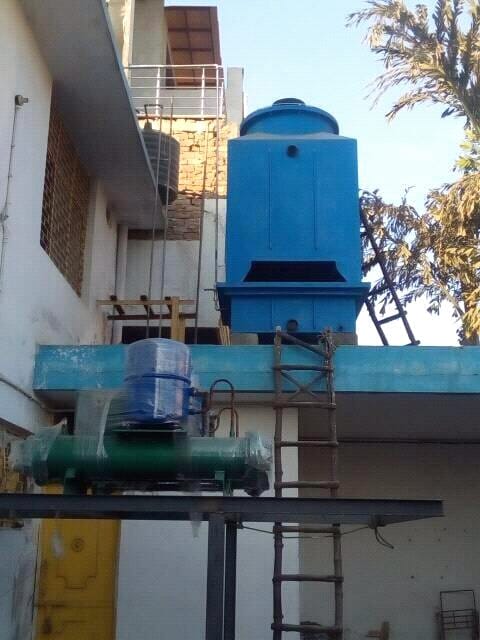Cross flow Cooling Tower
A Cross flow Cooling Tower is one where air flows horizontally across the falling water, rather than directly opposite to it.
How It Works
- Water Flow: Hot water enters at the top and flows downward by gravity over the fill.
- Air Flow: Air moves horizontally (side to side) across the falling water.
- Interaction: Since air cuts across the water stream instead of opposing it, the design allows for simpler water distribution.
Characteristics
- Air & Water Direction: Perpendicular (cross to each other).
- Water Distribution:
- Uses gravity-fed hot water basins with orifices (nozzles) → no need for high-pressure pumps.
- Simpler and less power-demanding water distribution system than counter flow.
- Tower Design:
- Usually shorter and wider compared to counterflow.
- Easier to maintain → water basins and nozzles are accessible at the top.
- Efficiency:
- Slightly less thermally efficient than counterflow (because the temperature difference between air and water is not maximized).
- Fan Power: Lower static pressure → requires less fan energy.
- Drift Risk: Higher than counterflow since air can entrain more water droplets sideways.
Applications
- HVAC cooling towers (for buildings, malls, hotels).
- Industrial plants where ease of maintenance and lower operating cost are more important than maximum efficiency.
